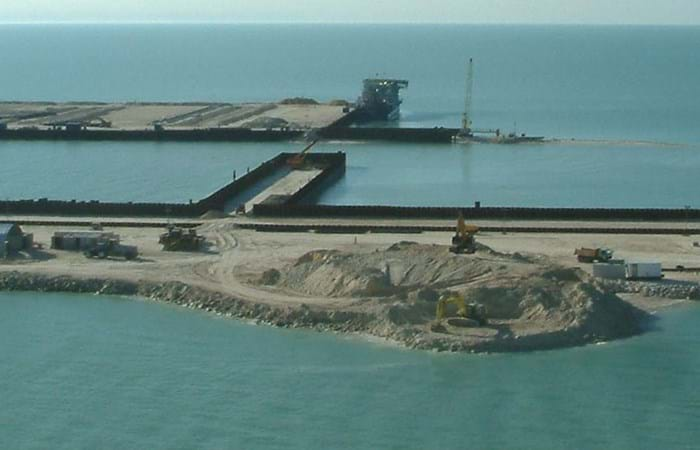Agip Kazakhstan North Caspian Operating Company B.V. (Agip KCO), a consortium of eight leading oil companies, is active in the northern section of the Caspian Sea. The gas and oil reserves in this area were mapped out in 1998 and 1999. To allow for their exploitation, Boskalis International has created an artificial island measuring 225 x 225 meters, and underwater berms, for Agip KCO. Four years later, the time was ripe for the construction of the drilling island and ice barriers. Once they were in place, Agip KCO could start to extract and distribute the oil reserves.
Boskalis Archirodon VOF (BAVOF) specializes in the construction of marine infrastructure. The company has extensive experience with the execution of complex multidisciplinary projects, both maritime and offshore. So it is a highly suitable partner for the construction of an offshore drilling island and ice barriers. This project in the Caspian Sea involved the construction of two corridors. One with a total length of 450 meters and 20 meters wide, and the other measuring more than 550 meters. BAVOF also built Riser Island, measuring 550 x 90 meters. This drilling island is the starting point for the pipelines taking the oil to shore for subsequent distribution. The main ice barrier (the South Barrier) for the drilling island was also built, together with two underwater berms; one near to the main site and the second in a completely isolated offshore location at a depth of 8 meters.
